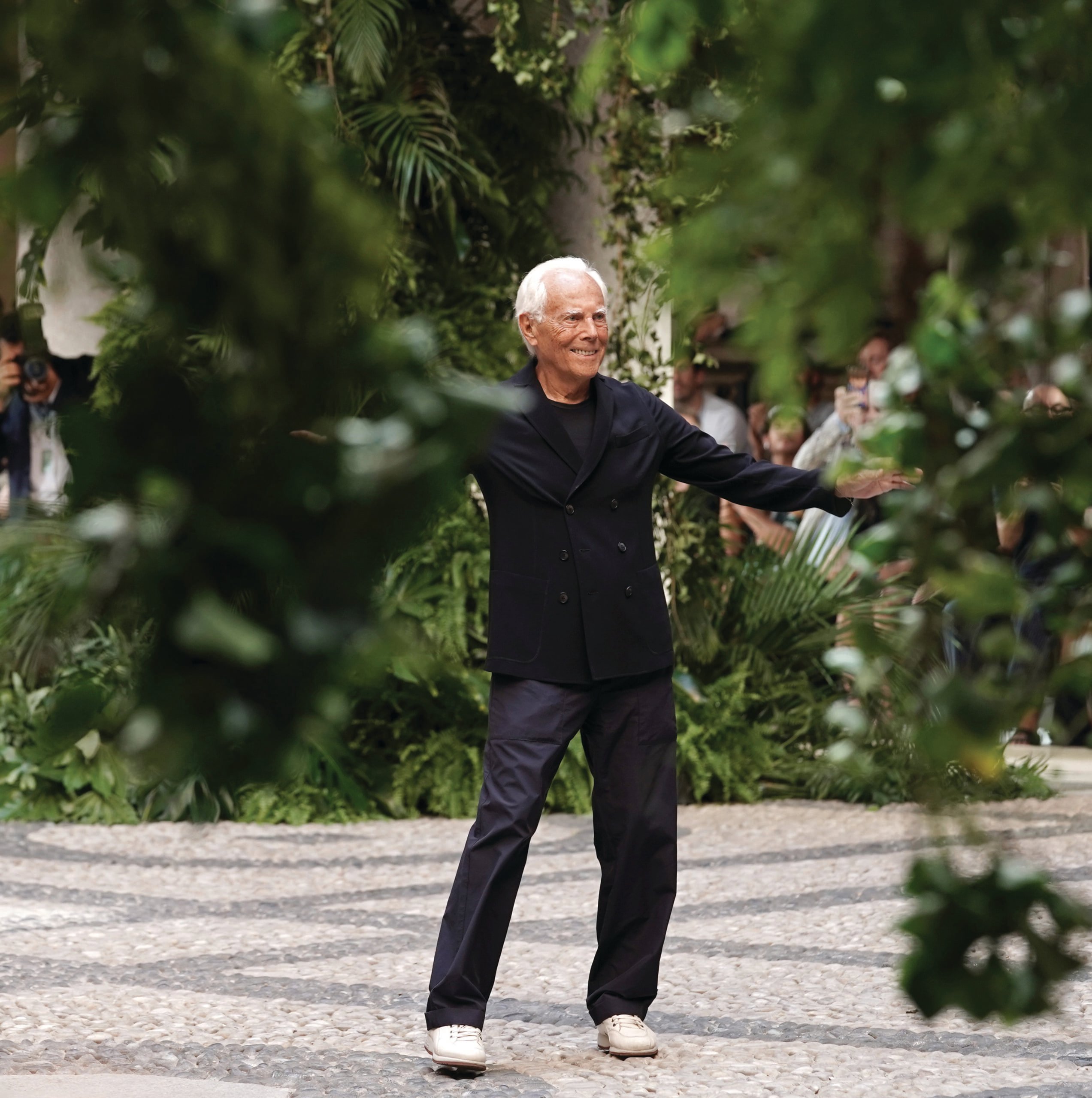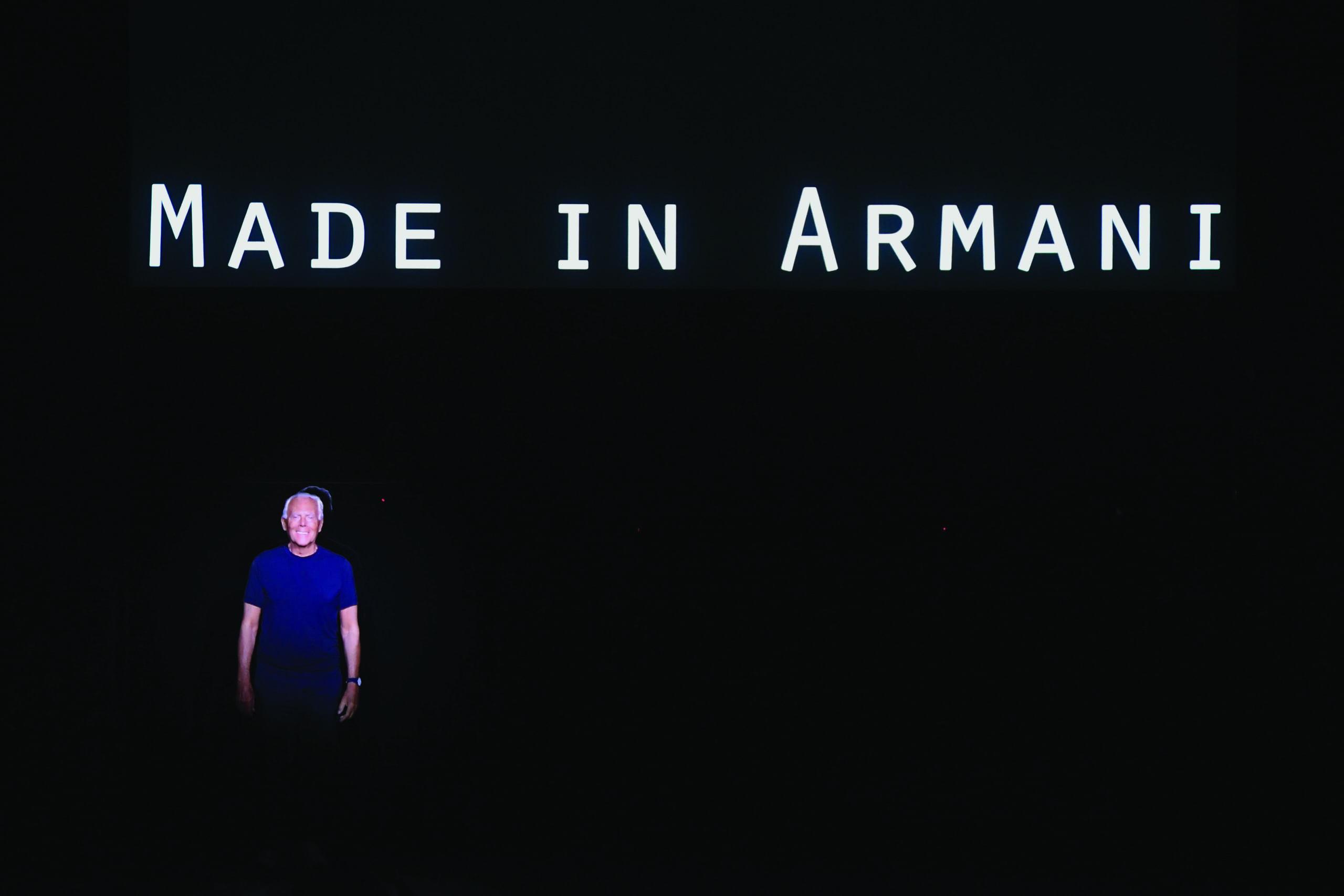How Giorgio Armani Built a Global Fashion Empire
The Italian fashion mogul started from the bottom, and now has an estimated net worth of $10 billion.

In an era in which celebrities, influencers and the hottest young designers seem to dominate the attention of the fashion world, Giorgio Armani stands apart. While his name has become synonymous with exquisite design over the past four decades, his path to the pinnacle of the industry started from the very bottom of the mountain, a refreshing difference from the instant stardom dominating today’s fashion world.
Following a stint in the Italian military post-WWII, and uncompleted time in university, Armani found work at the prestigious Milan department store La Rinascente, working at first as a window dresser, then a lower rung of the fashion world’s hierarchy. But his talent, and his eye for design, would not go unnoticed and before long he was asked to join the design team of the influential Nino Cerruti in 1964.
As his skills developed, he was encouraged by a friend, Sergio Galeotti, to expand into freelance design work, enabling him to express his individual ideas without the pressure of running a brand and the business behind such an enterprise. But by 1975, Armani and his friend Galeotti felt the time was right and together they founded the fashion house in his name, soon producing both mens and womenswear that took Europe by storm.
https://www.instagram.com/p/B37E8LvHuVZ
Understatement and refinement were keys to Armani’s designs, as he explained to WWD, claiming “My vision was clear: I believed in getting rid of the artifice of clothing. I believed in neutral colors.” Embracing natural-fitting designs, and more restrained color palettes, his apparel became must-have for the fashion-conscious of the European elite, and following his work appearing in trendsetting Hollywood films such as Richard Gere’s American Gigolo in 1980, and for the television program Miami Vice in the mid-80s, he began to conquer America just as he had previously thrived in Europe.
In the space of a decade his fashion house had gone global and the sky was the limit. However, tragedy struck just as the brand was reaching new heights, as Armani’s longtime personal and business partner, Galeotti, fell victim to AIDS-related complications, the epidemic of the time, passing away in 1985 and leaving the Italian designer to handle both the design and business sides of the burgeoning global brand. Overcoming this tragedy, Armani used the lessons he had learned in his long climb up the fashion hierarchy to not only maintain the business side of his venture, but to expand it to levels unmatched by his peers in the world of high fashion.
Ironically, it was his early years in a modest family that led him to dream of, and create, an empire of luxury and splendor. He explained this duality to Harper’s Bazaar in one of his few public interviews. “My family was a modest family with modest opportunities,” he admitted, “so I basically constructed a world for myself. And that’s why I love this job so much, because it has allowed me to build a world to which I never belonged—a world that I saw in films, and that I read about in books. I built my own way of being.”

Today, Giorgio Armani, who partly grew up in an Italy ruled by Mussolini’s fascist government and came of age during the economic struggle that was the postwar period, has an estimated net worth of around $10 billion, and his name is synonymous with design, luxury and the highest level of fashion desirability. While his keen eye and prodigious output of trendsetting collections is certainly a large part of his success, the truth is that since his business partner’s death, Armani has taken the brand to heights even Galeotti likely couldn’t have dreamed.
By the end of the 1990s, Armani had grown to operate some 200 retail locations globally, with revenues estimated to be around $2 billion a year. But the Italian iconoclast wasn’t satisfied. His name had become globally renowned as a catchphrase for luxury and design, so Armani began expanding into new industries.
His first restaurant opened in 1998, and by 2010 he was being drawn into the hotel and hospitality business, bringing not only his design sense and style to his projects, but a brand that is trusted by the global elite to deliver the epitome of refined luxury regardless of industry. Armani Hotels in Dubai (in the spectacular Burj Khalifa) and Milan, in addition to worldwide cafés, restaurants and clubs, have managed to expand the beloved brand without diluting its reputation, or distracting from its fashion-centric core business.
https://www.instagram.com/p/B4kW26FBh9T
He was even consulted on the design of an apartment for music star John Mayer, evidence of Armani’s impact far from its original fashion and clothing-based origins. Speaking in another rare interview with the Financial Times in 2017, the notoriously private Armani explained how his concept of fashion and design extends well beyond the catwalk. “Style, for me, is a mood that can be applied to everything. I’ve always thought fashion is much more than just clothes: it is a way of being. Expanding my vision to different fields, yet still striving to create something useful and durable, I can reach a wider audience.”
Even the Armani fashion offerings have expanded under Giorgio’s leadership, with numerous units including Giorgio Armani, Emporio Armani, and Armani Exchange, each focused on a different demographic of client, and ranging from the highest end of haute couture to jeans and casual wear. In the process giving even those with modest resources the ability to wear fashion from one of the world’s most famous designers, perhaps a nod to his own limited resources growing up.
He’s also expanded into furnishings, fragrances, beauty products, and specialty foods, utilizing licensing to leverage the power of his name and brand to expand his retail opportunities even wider. Armani, despite his worldwide fame and reputation, is famously indifferent to personal accolades or media attention. Again, bucking the trend of celebrity designers who put themselves front and center, he prefers to let his work represent him to the world, shunning most public appearances and interviews.
https://www.instagram.com/p/B4XqS3rHbx9
But even if Armani is willing to eschew the spotlight himself, don’t let that fool you into thinking that he isn’t still in control of the empire that bears his name. During his conversation with the Financial Times, the octogenarian icon explained that behind the scenes, everything is still under his direct, and unwavering control.
“To run an enterprise like this, every little detail counts: it’s like nurturing a baby,” he proudly declared. “You cannot overlook or underestimate the tiniest detail, or the whole endeavor will fall apart. It is invariably me who points out mistakes and comes up with solutions. I trust the people around me, but I’m the only one making the final decisions.”









